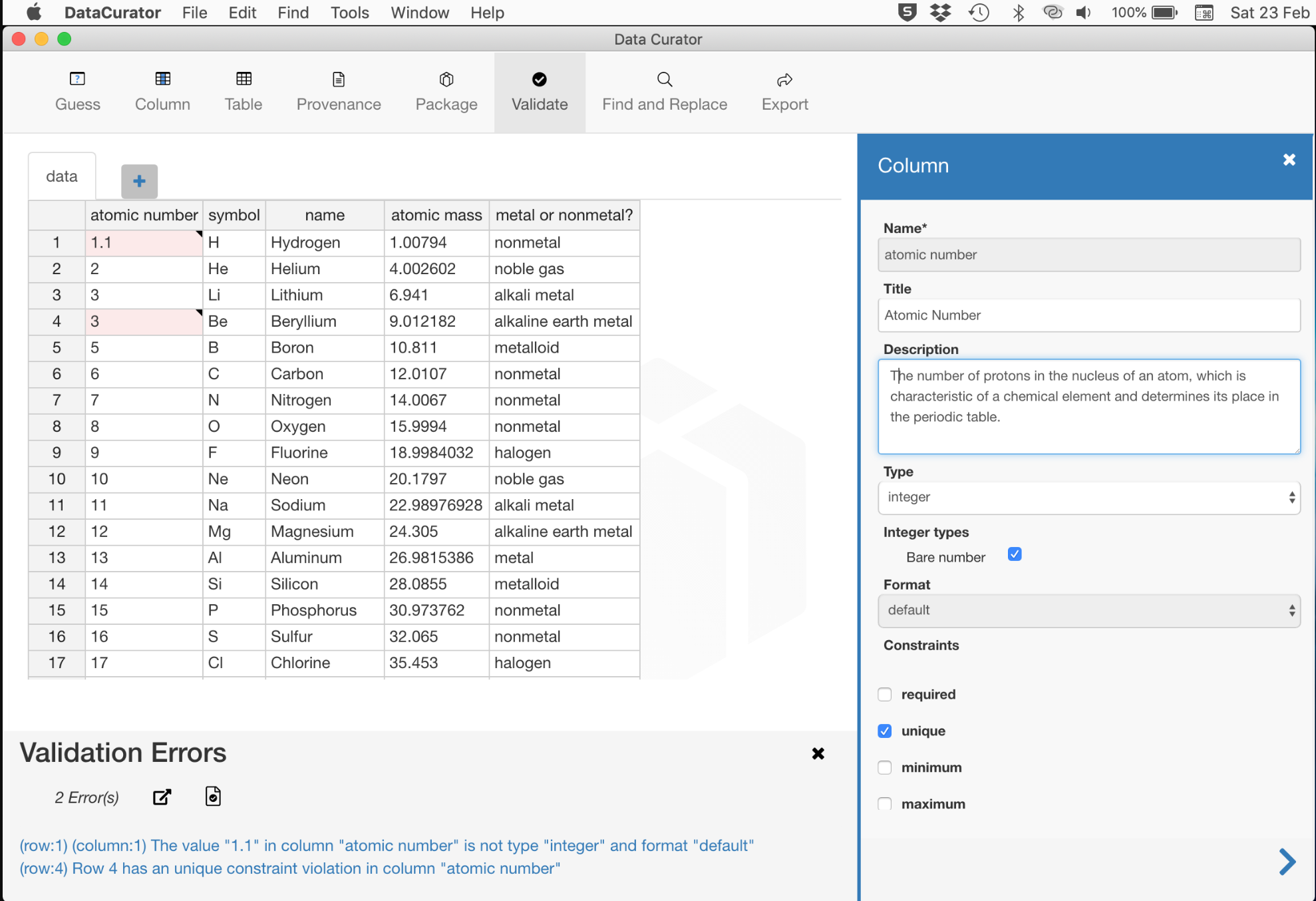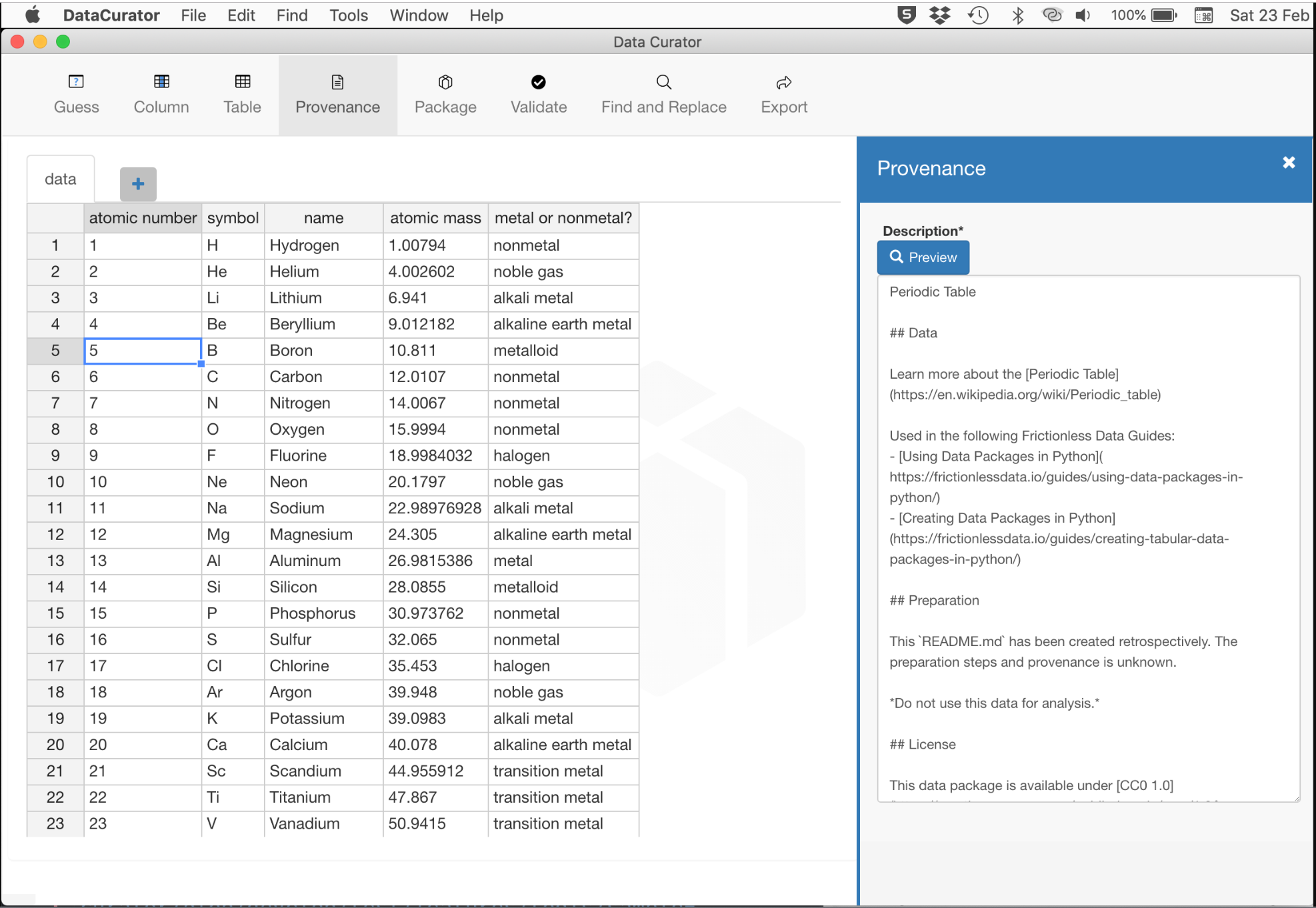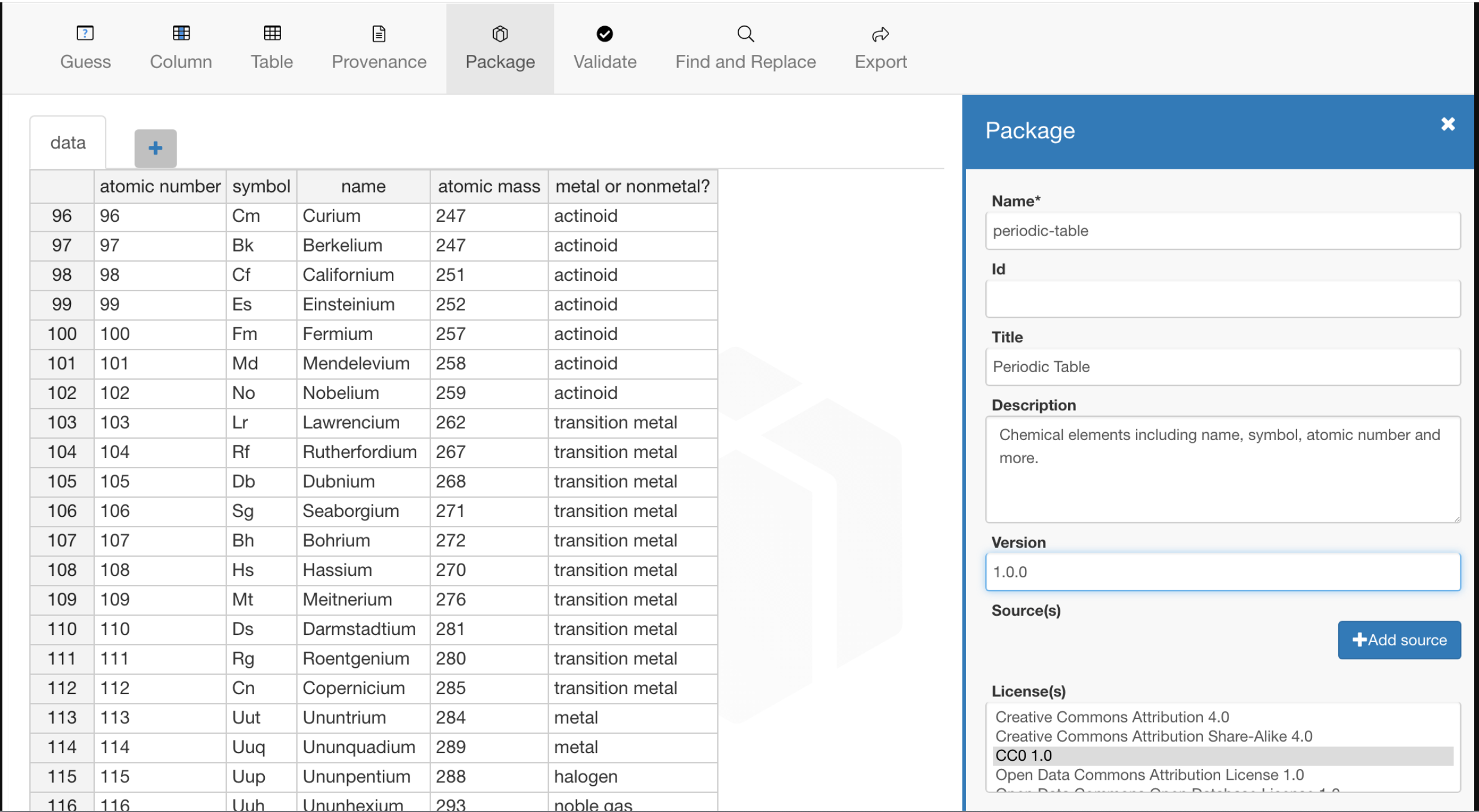Data Curator
# Data Curator - share usable open data
Open data producers are increasingly focusing on improving open data so it can be easily used to create insight and drive positive change.
Open data is more likely to be used if data consumers can:
- understand the structure of the data
- understand the quality of the data
- understand why and how the data was collected
- look up the meaning of codes used in the data
- access the data in an open machine-readable format
- know how the data is licensed and how it can be reused
Data Curator enables open data producers to define all this information using their desktop computer, prior to publishing it on the Internet.
Data Curator uses the Frictionless Data specification (opens new window) and software to package the data and supporting information in a Tabular Data Package (opens new window).

# Using Data Curator
Here’s how to use Data Curator to share usable open data in a data package:
- Download Data Curator (opens new window) for Windows or macOS
- In Data Curator, either:
- create some data
- open an Excel sheet
- open a separated value file (e.g. CSV, TSV)
- Follow the steps below…
# Describe the data
The Frictionless Data specification allows you to describe tabular data using a Table Schema (opens new window). A Table Schema allows each field in the data to be given:
- a
name,titleanddescription - a data
type(e.g.string,integer) andformat(e.g.uri,email) - one or more
constraints(e.g.required,unique) to limit data values and improve data validation
The Table Schema also allows you to describe the characters used to represent missing values (e.g. n/a, tba), primary keys, and foreign key relationships.
After adding data in Data Curator, to create a Table Schema:
- Give your data a header row, if it doesn’t have one
- Set the header row to give each field a
name - Guess column properties to give each field a
typeandformat - Set column properties to improve the data
typeandformatguesses, and add atitle,descriptionandconstraints - Set table properties to give the table a
name, define missing values, a primary key, and foreign keys.
# Validate the data
Using Data Curator, you can validate if the data complies with the field’s type, format and contraints. Errors found can be filtered in different ways so you can correct errors by row, by column or by error type.
In some cases data errors cannot be corrected, as they should be corrected in the source system and not as part of the data packaging process. If you’re happy to publish the data with errors, the error messages can be appended to the provenance information.
# Provide context
Data Curator lets you add provenance information to help people understand why and how the data was collected and determine if it is fit for their purpose.
Provenance information can be entered using Markdown (opens new window). You can preview the Markdown formatting in Data Curator.

You should follow the Readme FAQ when writing provenance information or, even easier, cut and paste from this sample (opens new window).
# Explain the meaning of codes
Data Curator supports foreign key relationships between data. Often a set of codes is used in a column of data and the list of valid codes and their description is in another table. The Frictionless Data specification enables linking this data within a table or across two tables in the same data package.
We’ve implemented the Foreign Keys to Data Packages pattern (opens new window) so you can have foreign key relationships across two data packages. This is really useful if you want to share code-lists across organisations.
You can define foreign key relationships in Data Curator in the table properties and the relationships are checked when you validate the data.
# Save the data in an open format
Data Curator lets you save data as a comma, semicolon, or tab separated value file. A matching CSV Dialect (opens new window) is added to the data package.
# Apply an open license
Applying a license, waiver, or public domain mark to a data package (opens new window) and its resources (opens new window) helps people understand how they can use, modify, and share the contents of the data package.

Although there are many ways to apply a licence, waiver or public domain mark to a data package, Data Curator only allows you to use open licences - after all, its purpose is to share usable open data.
# Export the data package
To ensure only usable open data is shared, Data Curator applies some checks before allowing a data package to be exported. These go beyond the mandatory requirements* in the Frictionless Data specification.
To export a tabular data package, it must have:
- a header row
- a table schema*
- a table (resource)
name* - a data package
name* - provenance information
- an open licence applied to the data package
If a data package version is used, it must follow the data package version pattern (opens new window).
Before exporting a data package you should:
- add a
titleanddescriptionto each field, table and data package - acknowledge any data sources and contributors
- validate the data and add any known errors to the provenance information
The data package is exported as a datapackage.zip file that contains the:
- data files in a
/datadirectory - data package, table (resource), table schema, and csv dialect properties in a
datapackage.jsonfile - provenance information in a
README.mdfile
# Share the data
Share the datapackage.zip with open data consumers by publishing it on the Internet or on an open data platform. Some platforms support uploading, displaying, and downloading data packages.
Open data consumers will be able to read the data package with one of the many applications and software libraries that work with data packages, including Data Curator.
# Get Started
Download Data Curator (opens new window) for Windows or macOS and start sharing usable open data.
# Who made Data Curator?
Data Curator was made possible with funding from the Queensland Government (opens new window) and the guidance of the Open Data Policy team within the Department of Housing and Public Works. We’re grateful for the ideas and testing provided by open data champions in the Department of Environment and Science, and the Department of Transport and Main Roads.
The project was led by Stephen Gates (opens new window) from the ODI Australian Network (opens new window). Software development was coordinated by Gavin Kennedy and performed by Matt Mulholland from the Queensland Cyber Infrastructure Foundation (opens new window) (QCIF).
Data Curator uses the Frictionless Data software libraries maintained by Open Knowledge International (opens new window) and we’re extremely grateful for the support provided by the team (opens new window).
Data Curator started life as Comma Chameleon (opens new window), an experiment (opens new window) by the ODI (opens new window). The ODI and the ODI Australian Network agreed to take the software in different directions (opens new window).


